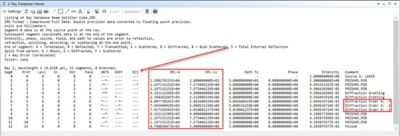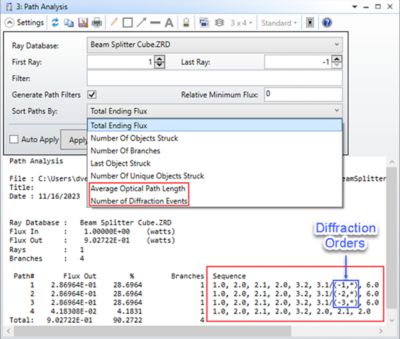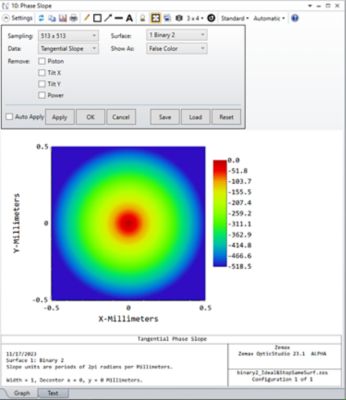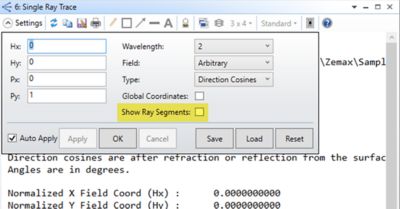-
United States -
United Kingdom -
India -
France -
Deutschland -
Italia -
日本 -
대한민국 -
中国 -
台灣
-
Ansys는 학생들에게 시뮬레이션 엔지니어링 소프트웨어를 무료로 제공함으로써 오늘날의 학생들의 성장을 지속적으로 지원하고 있습니다.
-
Ansys는 학생들에게 시뮬레이션 엔지니어링 소프트웨어를 무료로 제공함으로써 오늘날의 학생들의 성장을 지속적으로 지원하고 있습니다.
-
Ansys는 학생들에게 시뮬레이션 엔지니어링 소프트웨어를 무료로 제공함으로써 오늘날의 학생들의 성장을 지속적으로 지원하고 있습니다.
ANSYS BLOG
February 28, 2024
Incorporate Diffractive Optics and Metalenses into Macroscopic Optical Modeling with Greater Ease
As technology advances, the demand for optical elements continues to increase. However, many devices and systems now require smaller technology. As a result, optical designers are challenged to create large-scale designs using smaller optical components.
Metalenses and diffractive optical elements (DOEs) offer a solution to this challenge because they are more compact than traditional lenses. In this way, they help decrease system size and generally enable a simpler assembly process. Yet modeling and designing systems that contain metalenses or DOEs can be difficult.
To help optical designers navigate these challenges, Ansys Zemax OpticStudio 2024 R1 delivers enhanced support for incorporating metalenses and DOEs into macroscopic optical modeling more easily.

Enhance Optical Designs Across Industries
Metalenses employ subwavelength “meta-atom” patterns on dielectric surfaces to manipulate incident light. DOEs, also referred to as digital diffractive optics, consist of microstructures at the wavelength scale and utilize the wave characteristics of light to achieve their function. Both optical components are flat, thin, and lightweight, which make them a favorable choice when designing compact high-performance systems.
Essentially, they can be used in any design in which it is important to reduce the size and weight of the optics in the system. This includes lidar for 3D sensing in autonomous vehicles and facial recognition systems; medical devices such as endoscopes and microscopes; surveillance systems such as infrared and machine vision cameras; display and imaging systems such as cellphone cameras, complementary metal oxide semiconductor (CMOS) image sensors, and augmented reality (AR)/virtual reality (VR) headsets; and holography.
At present, metalenses and DOEs are most commonly featured in dot projectors used in lidar and polarization imaging systems, but development surrounding other applications is increasing, particularly endoscope and compact camera modules. The optical components are also suitable in the design of prescription glasses, which expands application prospects even further.
Model Optical Systems with Greater Ease
With such a wide scope of possibilities, optical designers can benefit from recent release features as described here.
Updates to Zemax Ray Database and Path Analysis
The Zemax Ray Database (ZRD) file generated when running a nonsequential ray trace now includes data needed to accurately track rays in systems with reflective, refractive, and diffractive optics. New ray segment properties include total internal reflection (TIR) as a flag, optical path length (OPL) in lens units, OPL in wave units, and diffraction orders.

The Zemax Ray Database (ZRD) now includes data needed to accurately track rays in systems with reflective, refractive, and diffractive optics.
Expanding upon this, the Path Analysis tool — found exclusively in OpticStudio nonsequential mode — uses the new ray data information in the ZRD to improve functionality. The tool can now also construct path sequences using objects’ faces and diffraction orders along the ray path. In other words, Path Analysis can now distinguish paths that follow a different diffraction order from paths that hit different faces on the same object. Aside from its recent upgrade, the tool allows the separation of physical paths that rays follow within an optical system. It can be utilized to study stray light generated by ghost reflections happening in optical components, such as component-level stray light.

The Path Analysis tool uses the new ray data information in the ZRD to improve functionality, insights, and data usability in complex systems.
New Phase Slope Map and Phase Slope Controlling Operands
Two new phase slope analyses have been added for use with surfaces that add a phase change to the ray, such as diffraction gratings. Additionally, two new merit function operands — PSLP and QSLP — constrain the phase slopes during optimization to keep phase slope values within manufacturable ranges and enable the user to control the phase slope of a surface.
More specifically, the PSLP operand returns the phase slope at a specific XY location on the phase surface, while the QSLP operand returns data about the entire phase slope dataset, such as maximum and minimum values. For example, users can constrain the maximum phase slope anywhere on the surface to be less than a given value to ensure that the diffractive element is manufacturable.
Addition of Ray Segment Data to Single Ray Trace When Tracing Through Gradient Birefringent Lenses

A new phase slope map and controlling operands enable you to easily analyze and control the phase slope that diffractive and phase surfaces add and keep the diffractive optics manufacturable.
A new option was added to the Single Ray Trace analysis: Show Ray Segments. This capability enables designers to analyze how rays propagate through gradient birefringent lenses and understand more about system behavior to improve design. The feature is especially useful for the design of liquid crystal lens components and expands upon user-defined dynamic-link library (DLL) capabilities to model birefringent lenses, which were added in OpticStudio 2023 R2. With user-defined birefringence DLL, you can customize the crystal axis as a function of position x, y, z in the gradient birefringence material.

Additional ray segment data enables designers to analyze rays propagating through gradient birefringent lenses in greater detail.
New DLL for Direct Modeling of Metalenses in OpticStudio and Ansys Lumerical
A new DLL enables the modeling of large-scale metalens components in OpticStudio.
Users first simulate and generate meta-atom data in Ansys Lumerical and then use the DLL to feed that data into OpticStudio. In Lumerical, a sweep of the parameters of the unit cell (e.g., radius of a nanorod) is performed to generate a database of parametric nano-element responses. Based on this data and the target phase profile, a large metalens is defined. The database is written into a file that includes a map with indexes, pointing at a discrete list of possible values for the phase and amplitude of every cell. The input is either a pair of files with file extensions .pmap and .aph or a single file with extension file name .h5. This data is then used in the Zemax plugin included in the download package to integrate the large lens into a macroscopic optical system that can be simulated with ray tracing.
Get Started Today
Metalenses and DOEs have the potential to revolutionize optics with their multifunctional capabilities and compact form factor. Updated capabilities in OpticStudio and integrated optics workflows empower designers to seamlessly capture design variations and incorporate DOEs and metalenses into macroscopic optical models with greater ease.
To discover how OpticStudio can benefit your optical designs, request a free trial of OpticStudio today.










